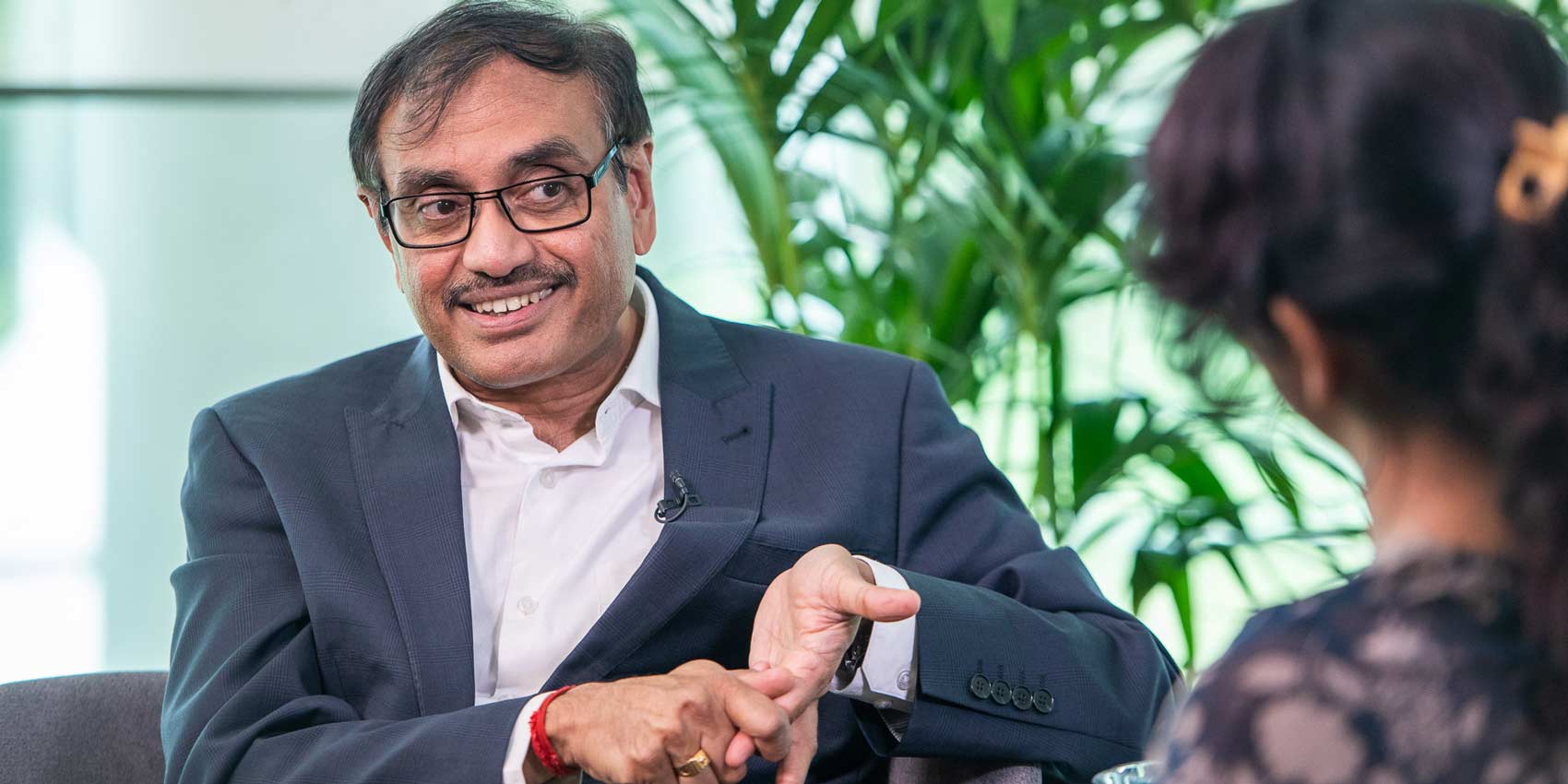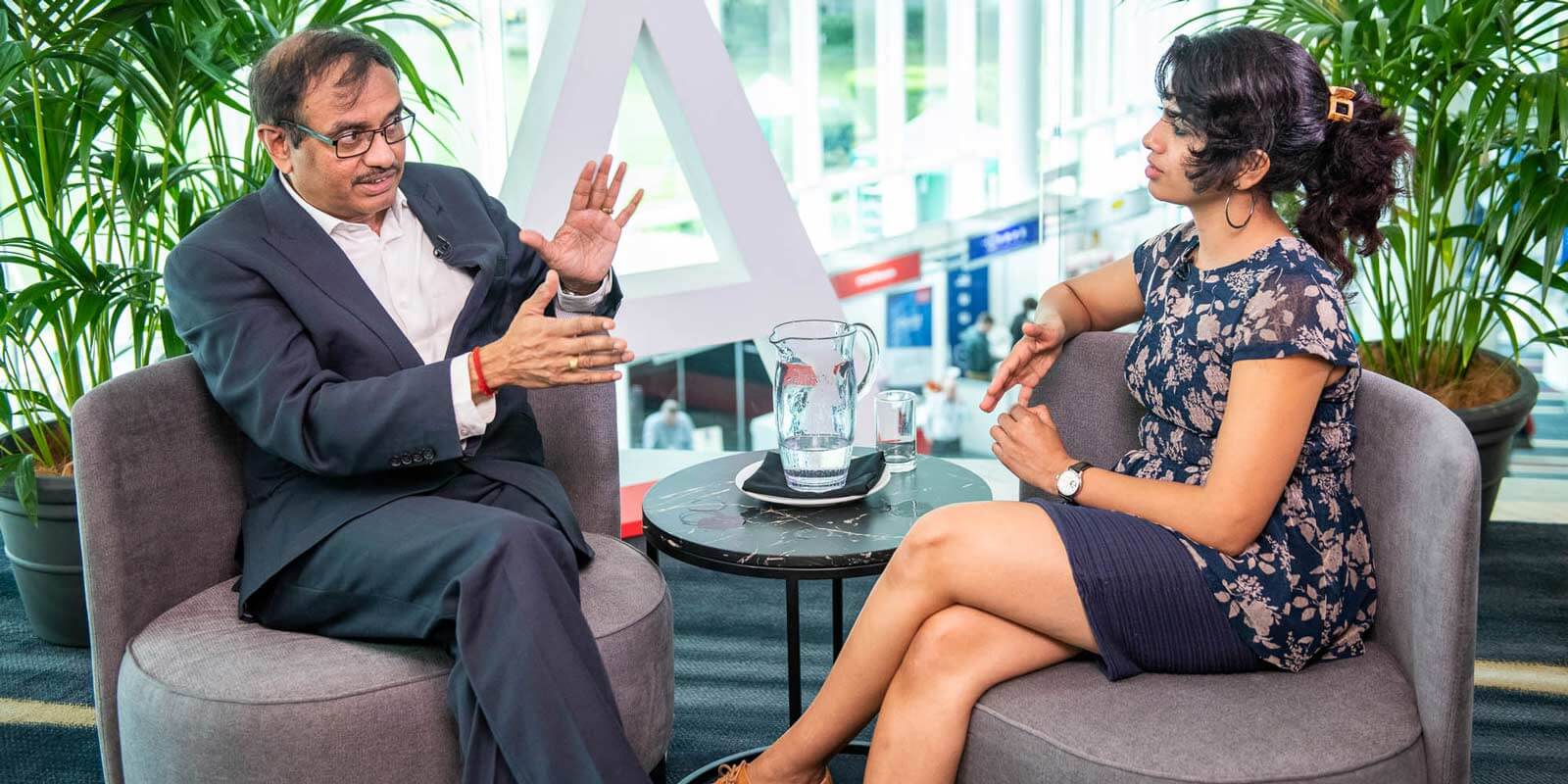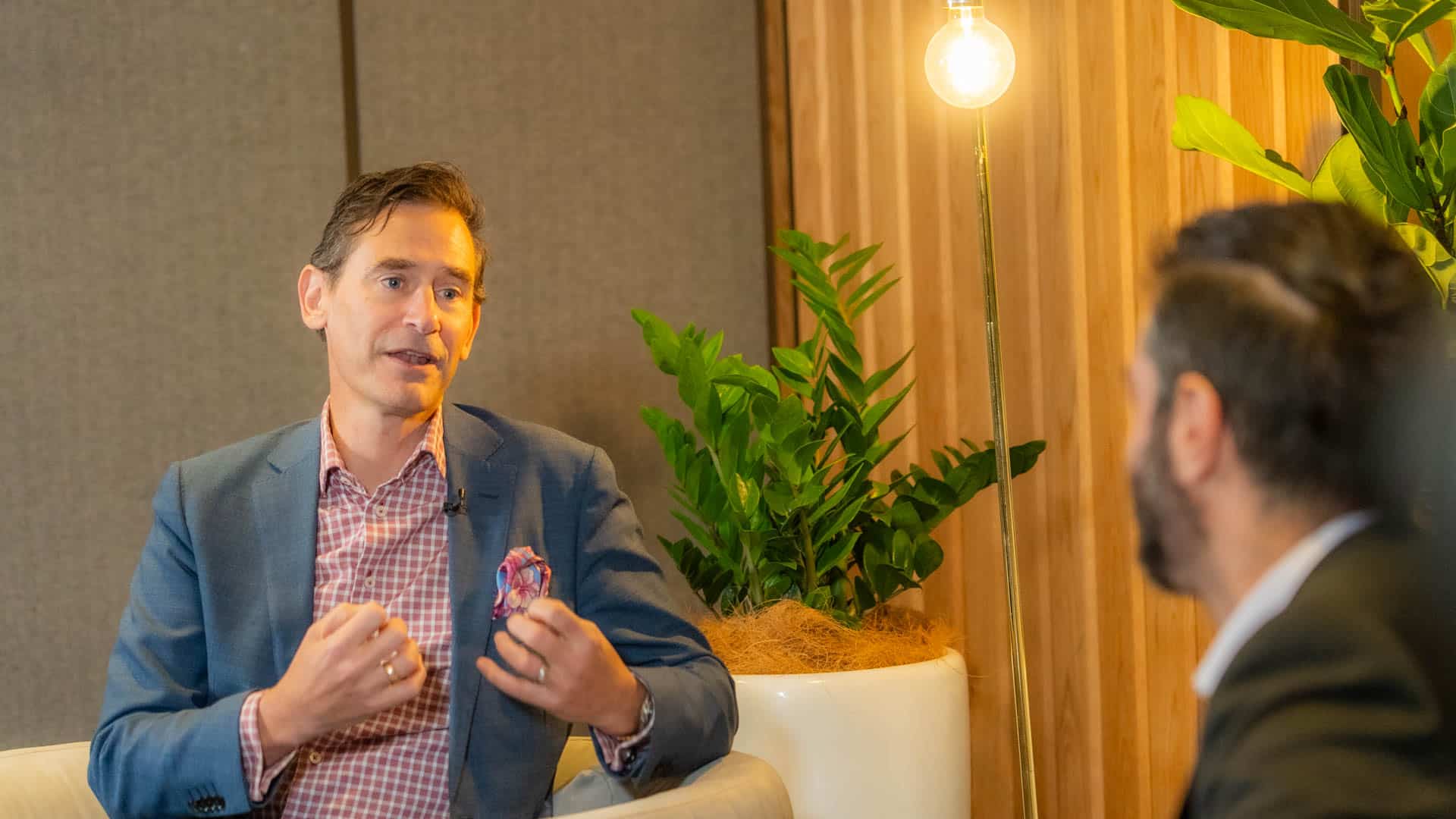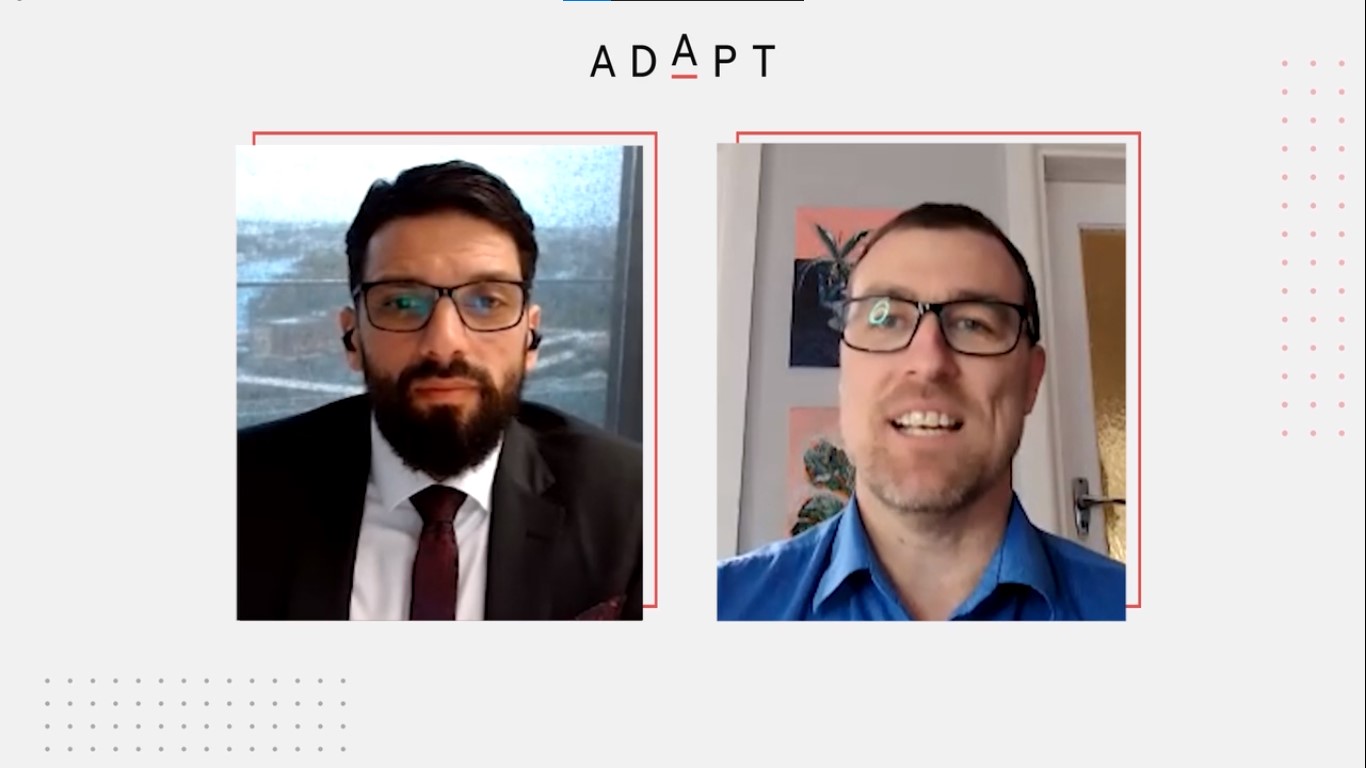Mohan Aiyaswami is presently a strategic advisor to DXC Technologies assisting them on various strategic initiatives. Prior to this role, Mohan held the challenging dual role as the CTO and CISO of the Australian Defence Organisation.
Speaking with ADAPT’s Senior Research Strategist Aparna Sundararajan at ADAPT’s CCDC Edge, Mohan shares his challenges in driving technology thought leadership, building credibility as a CIO, and IT costing models to replace IT budgets.
Aparna Sundararajan:
I remember that when we delivered our ADAPT 12 Core Competencies at the CIO Edge in February this year, you had a few comments that it’s fine to talk about that the competency needs to be on modernising legacy and driving operational effectiveness, building a data-driven organisation and driving technology thought leadership and transforming as a business leader. You had a certain view on why it’s not happening according to your experience in the last 20-30 years that you’ve been in the industry. So, I would like to understand from your perspective as to what is happening? What is the real challenge?
Mohan Aiyaswami:
Thank you again for your compliments on the keynote. That’s nice. It is quite a good experience. Essentially as I said, we can all feel disappointed a bit about the uptake of certain technologies, I think, in that CIO Edge conference you mentioned that machine learning, artificial intelligence and some of these technologies have not been adopted as much as you would have liked to. All of us would have liked. It goes back to something I said in the keynote because the current IT environment has been made complicated. Some of us, as in technology folks, will have to take a lot of responsibility for that. We can’t lay all the blame on the business. It’s us., So we need to, first of all, understand what the current landscape is, and then only worry about how we actually make it better and have some consideration to not making the same mistakes again and again. I don’t think we are spending a lot of time on that. So, we park the problems that we have experienced in the past and then try to jump onto the next thing and we commit the same mistakes again.
In five years’ time, I’m sure we’ll be sitting here, and we’ll be saying some of the adoptions of the digital labour that Dean Nelson was talking about are not being adopted as much as they thought they would be. So, fundamentally the issue is that IT shops will have to understand how to keep reinventing themselves, how not to leave a trail of legacy all the time they do something. So some of the fundamental things are around that. The second one is, I think if we’d talk about thought leadership, technology-thought leadership. Sometimes I feel, you know, I was a CIO myself, that CIO cannot, CIOs and CTOs cannot become arrogant.
Thought leadership is about demonstrating what technology can do in real terms and sometimes convert it into reality and show them because we actually go and talk a lot of theory.”
We go and say, “This is the next big thing in artificial intelligence.” “It is changing the world” or “machine learning will change the world.” But we don’t back it up with actually demonstrating how it can become a reality, how easily it can be implemented and so on. So I think we do have some ways to go and I think thought leadership is also about trust. Why would you consider me a thought leader in the subject if I don’t earn the trust that you know, you really know what you’re talking about? So, for me, I think there is a lot of obligation on CIOs and CTOs to actually earn the trust that what they are talking is not just a dump of all the technology jargons that they’ve learned in conferences like this, but more about how it is really applicable and how they can transform that.
Aparna Sundararajan:
Absolutely. So from your experience, you’ve been a CIO, CTO and you’ve also had a dual role of CISO and CIO at the same time in very large corporations. How were you able to overcome some of these challenges? What was your go-to in terms of talking to the business, building that credibility as a CIO that you should be looked upon? You should be the first person to be thought of when they’re thinking about implementing a new technology, which doesn’t happen right now.
Mohan Aiyaswami:
I don’t think I was extremely successful at something, but I’ve been modestly successful in some places. But I think one of the important things, as I said, is, it is a two-way street. And I say we should respect their knowledge of technology as much as they should respect my knowledge of technology. I gave you an example where one area of defence actually came up with a really bright technology. And I was able to say, “well done. How can I help you implement the technology?” So I think we’d make it a two-way street, first of all, so that we acknowledge that we are not the single custodians of technology knowledge in the organisation. And I think that will help.
And the second thing is, as I said to you, doing small chunks that will demonstrate something that can actually touch them. It doesn’t always have to be jazzy, and glittering toys that you deliver. I think I gave the example of the keynote where people in the operations area of defence, their main issue is how do I use IT in a bandwidth-constrained environment. You get, as I said, 128 kbps. And I got a lot of traffic including my email to my mum and dad, you know, saying hi, how are you? You know that sometimes get to the bottom of the queue. But if we introduce a technology that can actually somehow either increase the bandwidth or get more data to flow in the limited bandwidth they have, that to me is a far more impactful technology implementation than giving the latest model of mobile phone or some absolutely jazzy new front ends or something like that.
So to me, it’s about understanding what the real pain point is and demonstrating what you can do to help them address that real pain point.”
And that goes to the original point I made about understanding who your customer is. Right. So, if you want to leave defence out and then take my toll days, toll logistics, we had a global forwarding business. So they say that they pick up some clothing from a factory in China that needs to come and hit Kmart here in Australia and that’s just as an example, say that. So you do know the entire information flow starts from when the shipment leaves, what happens to the truck that actually takes the shipment from the factory to the port, what vendors that actually get on a flight to Australia or on a ship to Australia, the entire supply chain of information. What we fail to understand is that actually who is going to be most affected? Are the customers who want to buy those clothes? If those clothes aren’t found on the shelves, the customers are going to get upset. We completely forget that. We go more into what is the technology, what’s wrong with this system and that system and so on. So I think we will benefit a fair bit if we actually understand all the real end customer, what he or she wants and then go back and say, “Okay, what technology can help?”
Aparna Sundararajan:
Okay. And I know that now you’re advising a lot of companies as a strategic advisor, what are the key projects that you’re seeing that they are investing in?
Mohan Aiyaswami:
Surely, I think a lot of them are to do with, as I said, to use a broader term, digitisation and actually taking some of the owners, and the customers, for example, that is in DXC Technology where I’m currently consulting. There is a project which actually looks at without naming the organisation they’re doing it for, they are actually taking images and putting machine learning to analyse the images. The reason for that is that the particular organisation has human beings who will go through all these graphic images. It’s to do with national security and sometimes they can be very disturbing. You know, looking at some of the images can be very, very disturbing. I’ve been in that field, so I know how it is. So you put machine learning on top so that the machine actually goes through the images and picks some of these things so that the impact on the mental health of the individuals concerned is greatly reduced.
Aparna Sundararajan:
Oh, that’s interesting.
Mohan Aiyaswami:
So that’s a very good project DXC is doing now. So if you take that example, it’s not about machine learning per se, it is about the taking away the mental health impact because a lot of people are taking mental health-related leave because it is confronting to see some of the images which, can’t go into details, it’s very confronting, it can really put you off badly. So if you take that as a very good example of what we are trying to do or if you take augmented reality,
Aparna Sundararajan:
Okay. That one we’re interested to know.
Mohan Aiyaswami:
We are actually doing a project where the air force is trying to have the maintenance engineers, you know, I don’t know if you’ve ever seen, if you go into that, the maintenance engineers will have to have a book in that hand and some of their instruments here, they have to write down notes, just a really complicated thing. So, augmented reality helps them to see the issue, talk to the interface and then get things done without really having to carry, I don’t know, quite a few things that actually help in productivity. And ultimately if you look, it is about getting the aircraft to fly quickly. Not so much about anything else. So there are some really interesting projects that are happening.

Aparna Sundararajan:
And these budgets, where do the budgets come from for these projects then? Are you seeing them coming from traditional IT budgets or just business projects?
Mohan Aiyaswami:
No. No, it should come from, because it is business, it’s getting benefited. So if a CIO goes and says, you know, first of all, I don’t like the word IT budget. I told you there are a few types. It’s about the cost of IT to help you succeed. So I actually, one of my, I firmly believe that you should have more of an IT costing model than an IT budget model.
Aparna Sundararajan:
Makes sense.
Mohan Aiyaswami:
Anyway, but to answer your question, I don’t think such projects as I mentioned can succeed if it comes from the CIO. I’m saying, “This is my budget.” It should come from the business. They should champion it and we should just be evangelists in trying to make it work.
Aparna Sundararajan:
Okay. And what about, I want to go back to the IT costing model. What is your thought on that? That’s radical, so let’s hear about what should happen.
Mohan Aiyaswami:
I really think that IT CIOs organisations, IT organisations should have a clear view of what is the cost of doing IT. You know, for example, I give you a mobile phone, right? So instead of saying, you know, “I want a budget for rolling out 10,000 mobile phones at X dollars a year”, that’s budgeting. I would like to really understand what the cost of that mobile phone is. If you look at all aspects of that cost, you’ve got a phone, you’ve got a plan, and then you got data on that phone and then you got in case you lose it, there’ll be something. So if you actually put it, and then there will be maintenance 24*7 support. What happens if you’re calling somebody? So if you just put a cross-section of the service called a mobile phone given to you, there are so many costs that add up. So the cost of a mobile phone as a service is X dollars. So, and then if you actually look at all the services that an IT shop provides and then have the costing view and then you can have, and then you translate into a unit cost for the business. For example, you know, as I told you, the toll example, consignment note. How many consignments notes you raise and what is the cost of IT per consignment note? So if we can get to that level then I think it’ll be a much better discussion we can have.
Aparna Sundararajan:
Sounds like an attribution model is required.
Mohan Aiyaswami:
Correct. Absolutely.
Aparna Sundararajan:
As too, we have costs and then we have revenue and then you,
Mohan Aiyaswami:
Attribute the cost to the revenue rather than just saying, “we have the IT shop, we have traditionally had so many bills, we need to pay over to suppliers, and we have to pay so much salary to our employees and contractors”, add them all up and put a contingency of 10% and say, “this is my budget. I want the budget.”
Aparna Sundararajan:
Is someone doing it right now?
Mohan Aiyaswami:
We made the first attempt of it at all. I think it’d be really made a good job if it were trying to understand what the costing model is, and we did a, I think it’s still ongoing, but we made a good start of it at defence as well. Trying to say, “What is the costing model?”
Aparna Sundararajan:
Because it takes me back to the question that we ask in our surveys as to what is the proportion of your entire IT budget that is allocated to run, grow and transform initiatives? And we’ve seen that 60% of it is just running IT while 20, 20 is pretty much on run, on growth and transformation and I do assume a lot of outside IT budget is coming from business, moving away from IT as well. And that was also an attachment point, as in a point of issue for a lot of CIOs as to that the budget is getting out of their hands. Did you witness any of it with it?
Mohan Aiyaswami:
Quite of that bit because you know we –
Aparna Sundararajan:
Was there insecurity?
Mohan Aiyaswami:
I think so and I have a constant desire to keep running some of the old systems and it’s a problem. So I think most CIOs today will have this problem. Like you found out in your survey, but we have to really understand that if the business actually tries to champion transformation, you will see the pyramid is inverted. You’ll spend more on transformation and less on run. But as I said before, so far, our run budget, the run part of what you said, is nothing but the sum total of all the bills you pay.
Aparna Sundararajan:
Yes.

Mohan Aiyaswami:
If you convert that. There’s one of the challenges I gave to my own team in one organisation was if suppose we were to compete with, say the Infosys or the Wipros or the IBM’s of this world, and win the IT business from the organisation, what would you bid at? How would you go about doing it? That will drive a costing mentality, saying, “If we have to win this business, what is the best price we can pay, if we want to win this business?” IT shops don’t think about it that way. IT shops are more about saying, you know, “I know what my fixed costs are, and I’m going to add it all up.” So it’s a bit of a, I won’t say a revolutionary, it’s a bit of evolutionary thinking. Once you do that, then I think business will start respecting us too.
Aparna Sundararajan:
Right. Do you think that currently the business, the perception of IT or typically the CIO is restricted, and which is why the evolution of the role is also not there? Why I ask this question is we’ve talked about budgets and we’ve talked about transforming as a business leader, but we don’t see an evolutionary part for the CIO moving into, you know, running an entire company. That doesn’t happen. A CSO does go become a CEO and people who, you know like yourself are getting out and becoming strategic advisors while we have a dearth of talent at the entry-level. So this seems to be, there’s going to be a huge gap within IT in terms of just providing that leadership. So just want to understand what the solution is. What do you see? What do you foresee?
Mohan Aiyaswami:
I think we have to understand what business we are in and we have to really have a bit of humility to say that we need to be understanding you much better.
We have to encourage innovation happening everywhere and try to be the facilitator of innovations and new technologies rather than become the controller. So if you have this controlling mentality, saying, “It’s all under me”, then you’ll be treated like a cost centre.”
Aparna Sundararajan:
Now that’s great advice.
Mohan Aiyaswami:
And if you are at least thinking about, “I’m going to be a facilitator, I’m humble enough to learn from you”, and then, I think one day CIOs will become CEOs. In fact, I had a great Gartner session once and they said, “How many CIOs will become CEOs?” I think there is one. There’s only one, I think.
Aparna Sundararajan:
Why?
Mohan Aiyaswami:
As far as I know.
Aparna Sundararajan:
Think Starbucks, probably.
Mohan Aiyaswami:
No. It’s Schneider. Schneider, I think?
Aparna Sundararajan:
Schneider.
Mohan Aiyaswami:
I know only one. Maximum maybe two. One day I think you know before my life ends, I would like to see a CIO.
Aparna Sundararajan:
Well, on that note, all the best. I do hope maybe we see you as a CEO for another company.


























